Original and unusual landscaping and decorating a garden plot will help yucca garden. A plant similar to an exotic palm tree looks very impressive and festive in the garden. Recently, this ornamental flowering culture has gained great popularity among landscape designers and gardeners. This article will discuss planting and the nuances of caring for garden yucca in the open field.
Content
Description and photo of Yucca Sadovaya
An exotic plant is perennial tree shrub and belongs to the Agavov family. Its rigid xiphoid leaves form a dense rosette in which they grow in a spiral. The leaf plates can be green or gray in color and grow up to 25-100 cm. A large panicle protrudes from the center of the rosette - a peduncle with drooping white or milky flowers. Each inflorescence per season can bloom up to 200 bells 7 cm long and up to 5 cm wide. By the end of the season, a seed fruit is formed on the plant.
Types of garden yucca
Two types of yucca are grown outdoors:
- Gray yucca is distinguished by leaves up to 90 cm long and a short trunk. Its thin grayish green leaves have lighter edges. Yellowish or greenish-white flowers form narrow, finely branched inflorescences. The peduncle can grow up to three meters. The plant is not demanding on the soil, and can even grow on sand. Gray-gray yucca tolerates drought and frost well, but can die if excessive moisture is present.
- Filamentous yucca is a bush with xiphoid leaves up to 70 cm long. Its leaves can grow from 3 to 10 cm wide. At the edges they are framed by protruding threads, and slightly bent from above. Peduncle 2.5 m long consists of beige and white drooping flowers. Yucca filamentous is a very unpretentious plant that can withstand frosts down to -20C.
Yucca garden: planting and care, photo
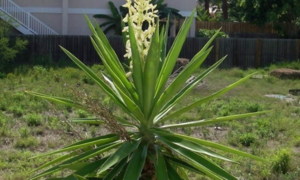 It is not recommended to plant the purchased plant directly into open ground. First you need to harden it. For this in the early days of the bush take out to fresh air for an hour or two... The time spent outdoors gradually increases, and after about two weeks, the yucca can be planted in a permanent place.
It is not recommended to plant the purchased plant directly into open ground. First you need to harden it. For this in the early days of the bush take out to fresh air for an hour or two... The time spent outdoors gradually increases, and after about two weeks, the yucca can be planted in a permanent place.
An exotic plant loves light, so well-lit, elevated areas are suitable for it. When planted in the shade, or even partial shade, the rosettes become loose and thinner. In variegated species, the leaves turn pale.
Landing features
For young bushes, not very large pits are required, but taking into account their growth. For a three-year-old large plant, the pit in the girth should be from 70 to 100 cm.Their root deepens by 40-50 cm.
It is recommended to dig up the ground and prepare a hole for planting yucca in the fall. The site must be well drained and not clayey. Garden yucca grows best on clay-stony, sandy, calcareous soils and black soil. The plant does not like waterlogging, so there should be no groundwater near its planting site.
At the bottom of the hole, coarse gravel or sand and two handfuls of ash are poured.The bush is carefully planted and its roots are covered with earth. The soil is pressed a little with your hands and watered with water at room temperature.
The plant is planted in the spring, after the night temperatures are at least + 10C. It is recommended to work while planting a bush with gloves, since dense leaves can prick or cut your hands.
Watering and subcrusting
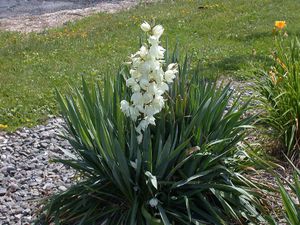 A tropical plant does not require excessive care. When growing it outdoors, you need regular but infrequent watering... It should be carried out only after the top layer of the soil dries well. From time to time, the leaves of the bush can be sprayed, especially if they wilt or dry out. Spraying is done in the evening or early in the morning.
A tropical plant does not require excessive care. When growing it outdoors, you need regular but infrequent watering... It should be carried out only after the top layer of the soil dries well. From time to time, the leaves of the bush can be sprayed, especially if they wilt or dry out. Spraying is done in the evening or early in the morning.
Twice during the active growth, garden yucca is fed with complex mineral fertilizers for succulents. The first top dressing is applied at the beginning of the growing season, which begins in May, and the second - after the plant has flowered.
Transfer
An overgrown exotic tree that has grown in one place for a long time requires replanting. In the new place, the garden yucca will grow with renewed vigor and bloom effectively. However, replanting the plant too often is not desirable.
Experienced flower growers recommend when transplanting:
- Transplant in spring or late summer.
- Dig up the plant very carefully so as not to damage the roots. It should be borne in mind that in an adult plant, they can go to a depth of 70 cm.
- If a shoot appears near the bush, then it must be separated and planted as an independent plant.
- The new landing site should not be very different from the old one. The site must be well lit and protected from drafts.
The transplanted garden yucca, two weeks later, is fed with special complex fertilizers. It will bloom one year after transplantation.
Do I need to dig a yucca for the winter?
Many people wonder - do i need to dig a tropical plant, or can you just insulate it before the onset of cold weather? If a filamentous or bluish yucca grows in the garden, then these are frost-resistant plants that easily tolerate a short-term drop in temperatures. In regions with severe winters, it is recommended to insulate the garden yucca. In the first two years, young plants are insulated in any open areas. There are several ways to cover a garden yucca for the winter:
 In dry weather, the leaves of the plant are collected in a bunch and tied with a rope or twine along the entire length. To prevent freezing of the soil, it is recommended to spread several lower leaves on the ground. The soil around the bush is covered with dry leaves, on which boards or sticks are laid. In this case, the leaves will not be blown away by a gust of wind. The bandaged plant is covered with polyethylene, and the base of the trunk is covered with earth.
In dry weather, the leaves of the plant are collected in a bunch and tied with a rope or twine along the entire length. To prevent freezing of the soil, it is recommended to spread several lower leaves on the ground. The soil around the bush is covered with dry leaves, on which boards or sticks are laid. In this case, the leaves will not be blown away by a gust of wind. The bandaged plant is covered with polyethylene, and the base of the trunk is covered with earth.- You can insulate the yucca using a spacious wooden box, which is covered from above with roofing material, foam or non-woven material. The resulting construction is sprinkled with dry leaves and covered with spruce branches or straw. Finally, a film is wound over the straw.
Insulate the plant for the winter follows in late October - early November. They remove protection only after the last threat of frost passes.
Reproduction of yucca garden
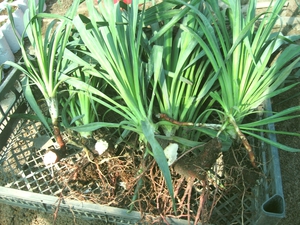 There are several ways to propagate a plant:
There are several ways to propagate a plant:
- seeds;
- cuttings;
- stem;
- dividing the bush.
Dividing the bush is the easiest way to propagate garden yucca, which can be carried out when transplanting it. An overgrown bush is dug up in April or early May, and shoots with roots and shoots are separated from it. Delenki are planted in a permanent place and watered. They require special care, which consists in neat infrequent watering, shading the plant from direct sunlight and feeding after rooting.
When propagating with stems slightly above the root collar, a piece of the trunk is cut off, which must first be dried, and only then planted in river sand or perlite in a horizontal state. Rooting should take place at room temperature. The substrate around the stem is kept moist. As soon as sprouts with roots appear, the stem is cut into pieces and planted in the ground. Each segment should have its own sprout.
To obtain a cutting you need cut off the top of the stem, which should have a bunch of leaves. Cuttings are planted in pots with perlite or coarse sand only a few days after drying. Caring for them consists in spraying the substrate with water at room temperature.
Garden yuccas growing in the open field often set seeds, which can be collected at the end of August for the subsequent reproduction of the plant. You can buy seeds at almost any flower shop. They have a rounded shape and reach 0.5-1 cm in diameter. Sowing is carried out in an earthen mixture, which should consist of equal parts:
- leafy land;
- turf land;
- coarse sand.
The first seedlings should appear in about a month. When two true leaves appear, they are produced picking in separate cups... Already well-matured and grown young plants are planted in large pots or open ground. Yucca grown from seeds will bloom only in the third year after planting.
Thanks to a tropical plant in your garden, you can create an exotic corner. A very beautiful, colorful, and at the same time unpretentious yucca in care will make the garden unusual and will delight you for many years.

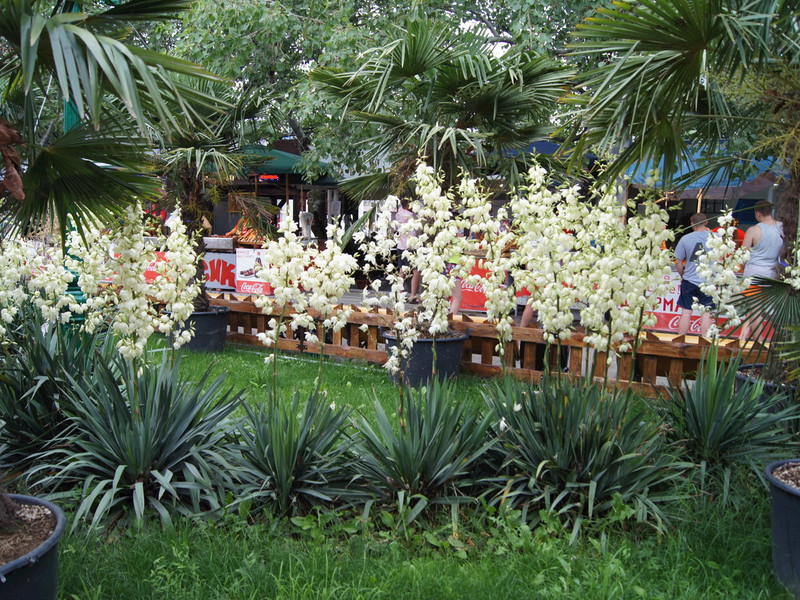
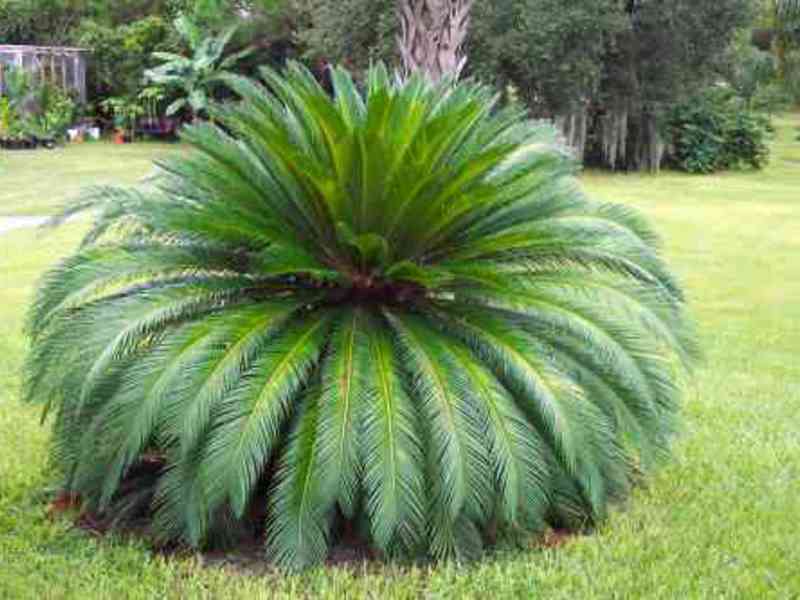
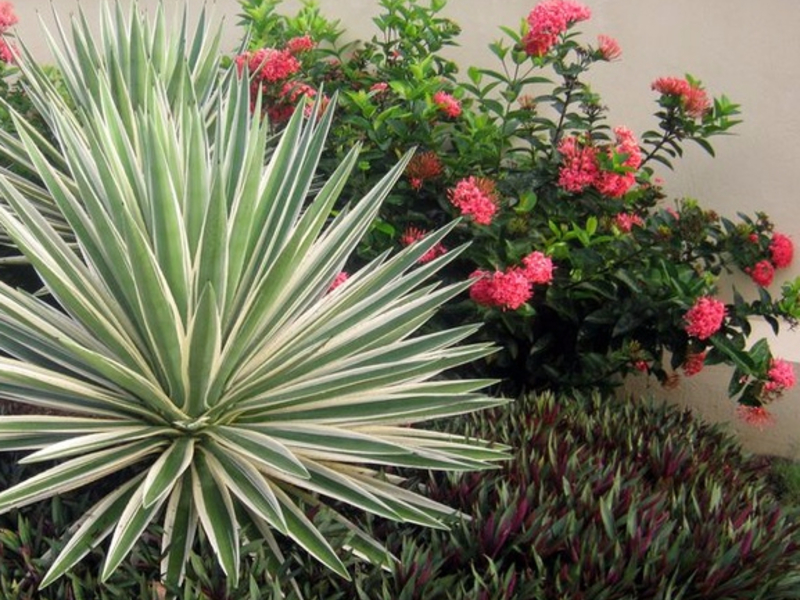
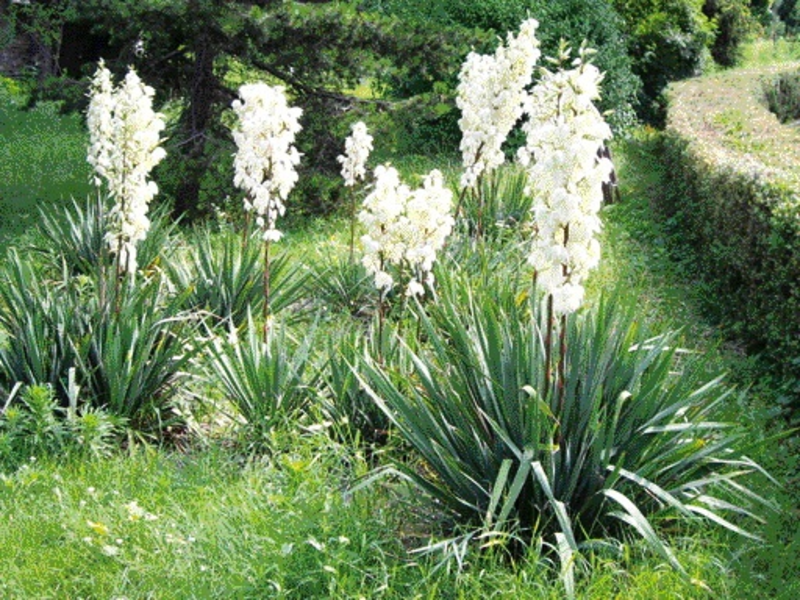
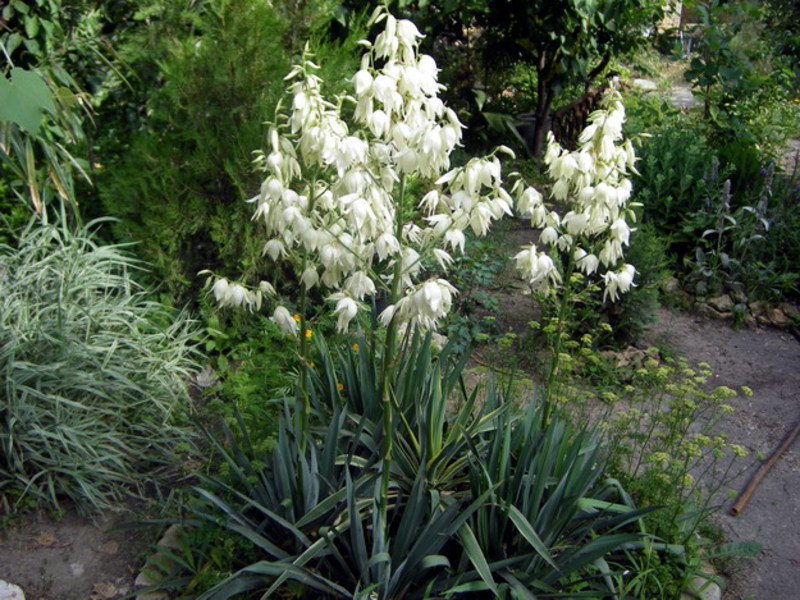
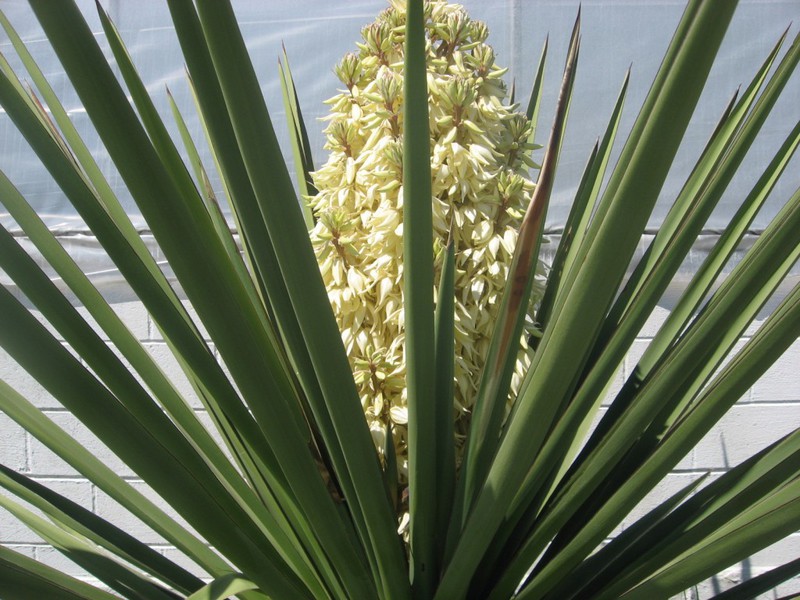
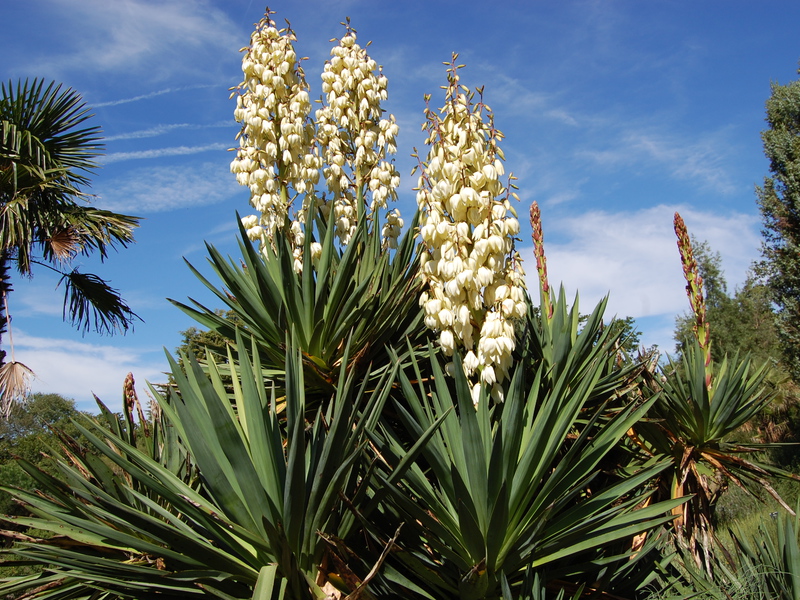
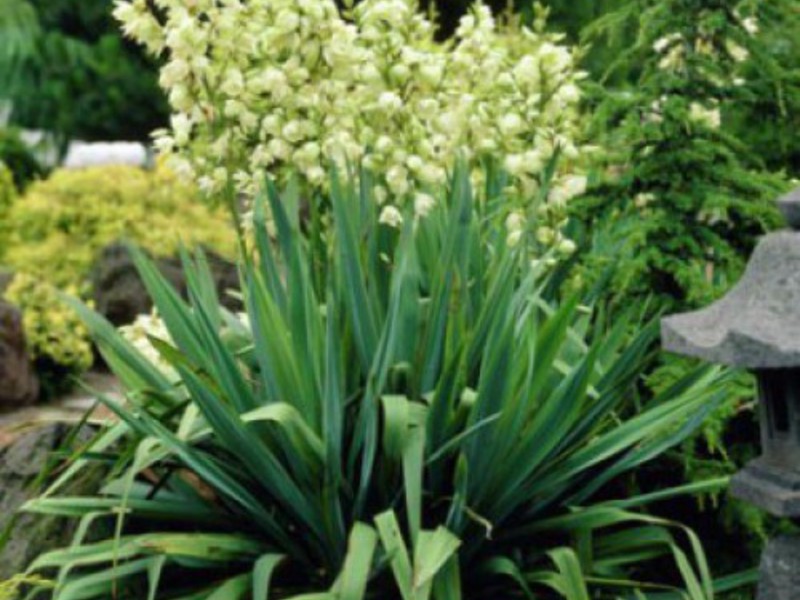
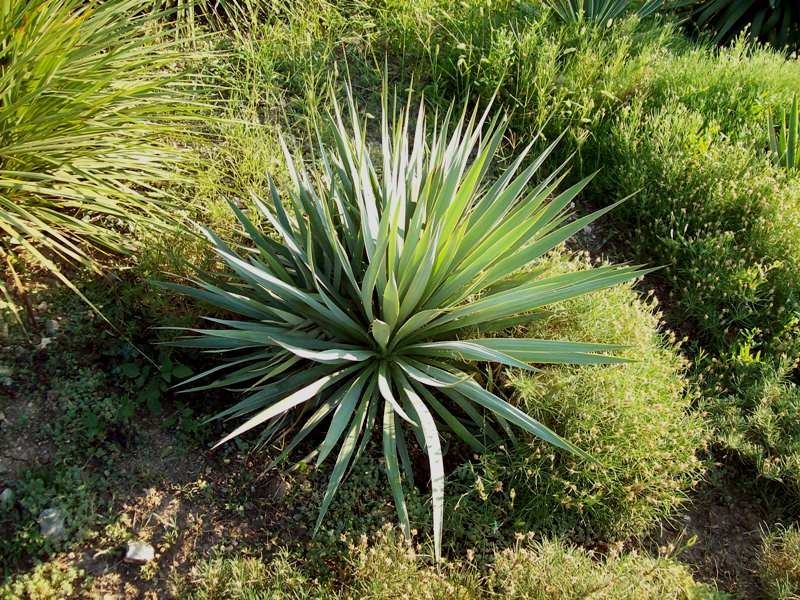

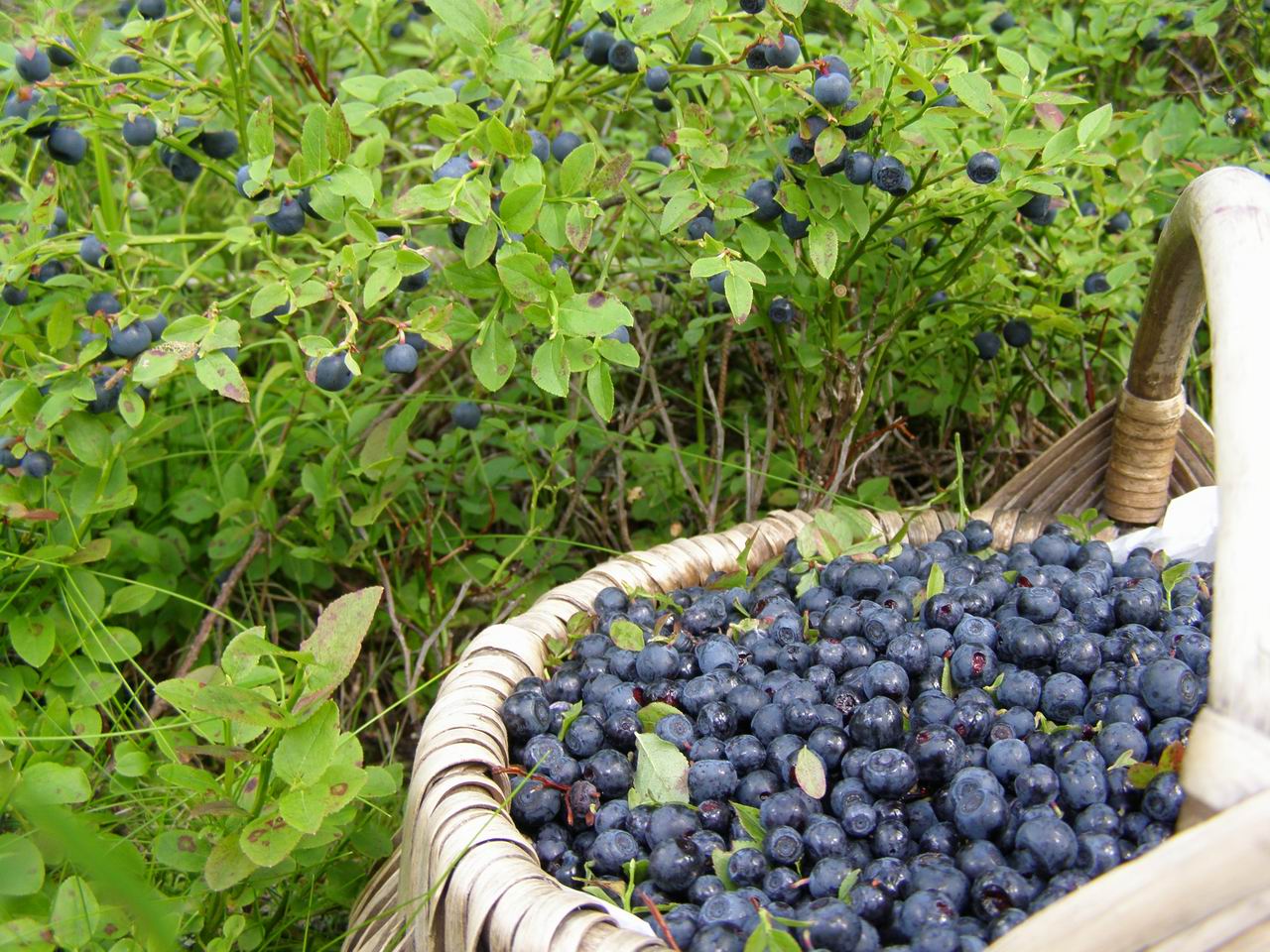
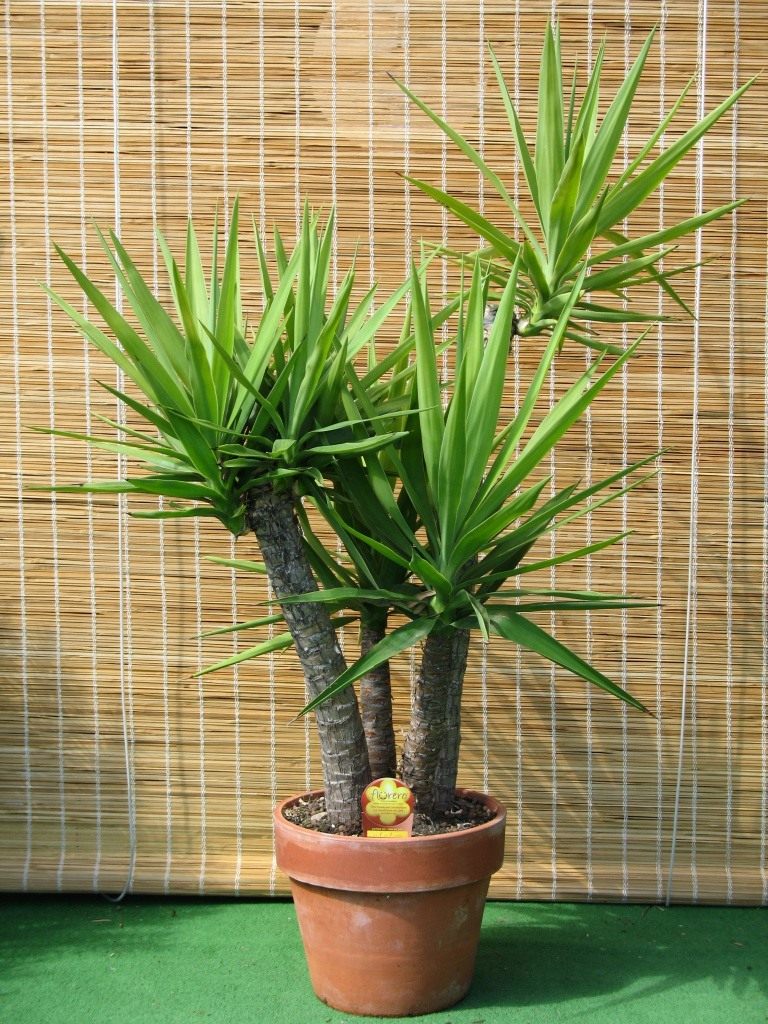
1 comment